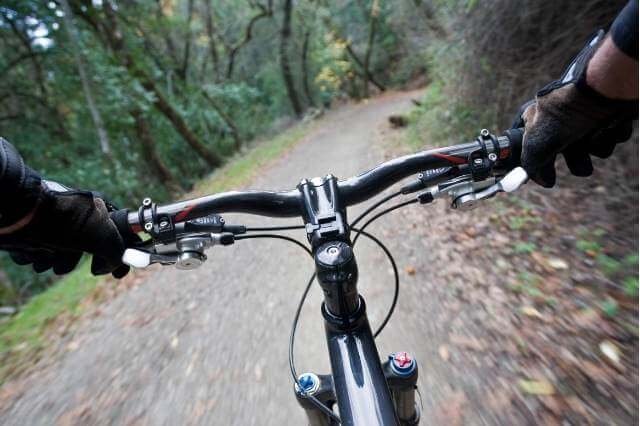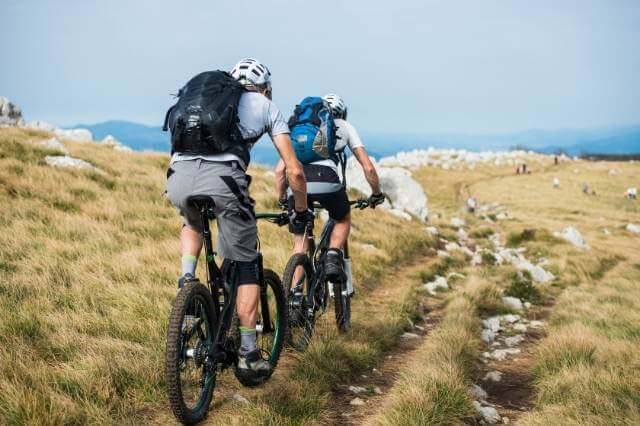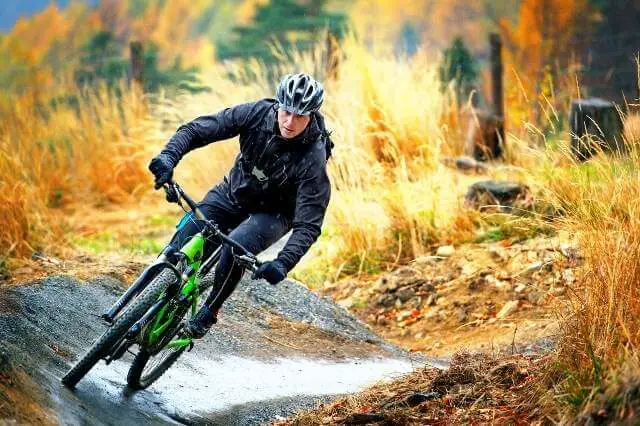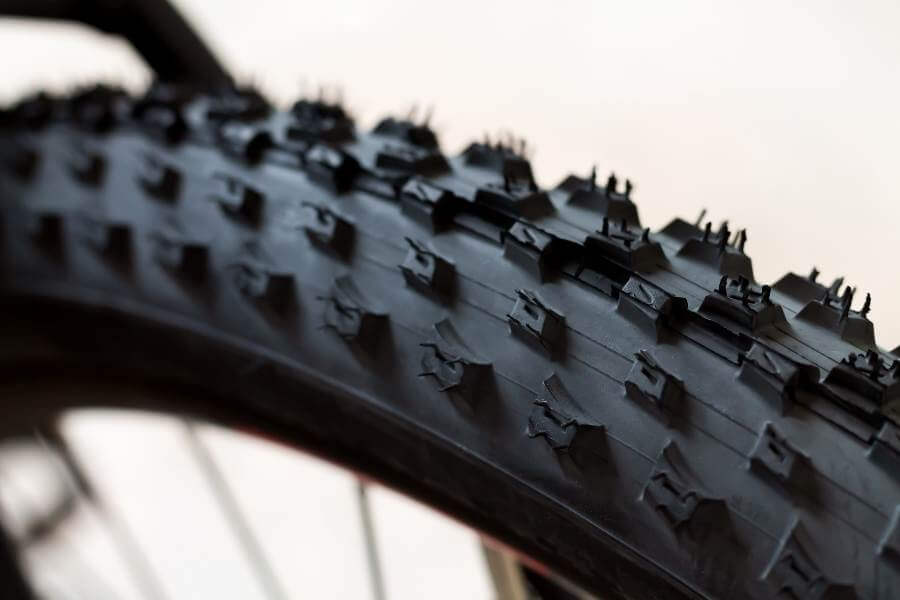In recent years, tubeless technology has completely changed the mountain bike industry by enhancing tire performance, enhancing puncture resistance, and reducing weight.
This post is for you if you’re thinking about going tubeless for your bike.
Table of Contents
How Much Does It Cost to Go Tubeless on a Mountain Bike?
What you start with will determine the answer to this question in a big way.
You’ll be set to go with the price of about 250ml of sealant, which is about the £15 mark from a reputable brand if you’ve purchased a new bike and it has tubeless-ready rims, tires, and some tubeless valve stems included with it.
If you have tubeless-ready rims and tires but no valves, they may range from £7 for simple brass valves to £23 for fancier, lighter aluminum valves like the Muc-Off products we described earlier, which come with a number of variably shaped rubber seals to better match as many rim types as possible.
Many sealants may still be able to make your tires airtight enough if they aren’t tubeless-ready, but you will probably need to use more sealant to accomplish this.
For this reason, we always advise buying more sealant than you think you’ll need because adding a lot more will frequently get you out of trouble. If you switch to a set of tubeless-ready tires, expect to pay around £40 per tire, depending on the manufacturer.
Tubeless-ready tires do have a tendency to inflate and seat much more readily.
Things can get pricey if you don’t have tubeless-ready rims because a new wheelset isn’t cheap.
However, it is possible to convert non-tubeless rims to tubeless using a rim strip tubeless kit.
These kits typically include tubeless valves and sealant, making them a simple method to get set up.
Budget between £40 and £70 if you require one of these, depending on the brand and features.
However, the cheapest method is to seal your rims with something like Gorilla Tape; in fact, this is what we generally do.
A roll that is 24mm broad and 9m long costs around £10 and can often be used for four wheels.

Pros and Cons of Tubeless Tires
Pros
You’ll Get Fewer Flats
When you strike a hard item, such as a rock, your tire will distort.
That pebble and your rim may press together violently enough to rupture a tube in the event of a significant accident and a tubed tire.
You have a flat to mend, whether you refer to it as a “pinch flat” or a “snake bite” (two pinch holes).
You won’t need to fix a pinch flat ever again if you switch to tubeless tires.
Also, tubeless tires have much fewer puncture flats because of the sealant provided during mounting.
After a ride, tubeless cyclists who find a tire covered in shining patches might grin knowing that their sealant quickly healed all the thorns and pricks.
You’ll Save Some Weight
Due to the diversity of tubeless options, it is difficult to estimate how much weight you would save by switching.
To begin with, cutting out a conventional tube can save weight by up to 200 grams.
There are inflation valves and sealants within every tubeless wheel and tire, which negates the weight reduction, although the overall weight is usually always lower.
Even little weight reductions have an advantage since they are in a rotating component.
Your legs will feel more refreshed because you’ll be using less energy while riding.
Your Ride Will Be Better
Many riders claim that getting rid of the tube improves their sense of the trail.
Additionally, tubeless tires may be used at much lower pressures than tubed tires (no need to worry about pinch flats), increasing the amount of tire tread that makes contact with the ground.
Better traction, especially in turns, is the end consequence.
Because low PSI running allows tires to adhere to obstacles rather than bounce off of them, it also helps keep your bike moving.
Additionally, it enables a tire to absorb minor jolts and trail noise for a smoother ride.
Cons
They Require More Time to Mount
It might be a bit challenging to put tubeless tires on. The airtight seal required for proper tire bead seating on the rim is the main issue.
You must properly add sealant to the process before quickly adding a large amount of air.
More Money
Wheels and tires that are tubeless-ready do cost extra. However, you typically receive more for your money.
When shopping for tubeless components, you’re likely to see tires with cutting-edge rubber compounds and wheels that are sturdy and light because the majority of businesses’ most modern offers are tubeless-ready.
Mess With Sealant
It takes sealant, which must be added, to create an airtight seal between the tire and the rim.
And washing off that sealant isn’t very enjoyable on the odd occasion that a tire is gashed sufficiently to spray parts and apparel.
Additionally, you must add tire sealant on a regular basis once it has evaporated or dried off.
If you reside in a chilly, damp region of the nation, you might only need to do this once a year or every few months in warm regions.
Still Required: Tube Carrying
Put a tube in your tire if you have a flat while riding since it signifies the breach was too large for the sealant to self-repair.
Therefore, you must always travel with an emergency tube.

Tubeless or Tubed, Which Is Lighter?
We purchased two common Specialized innertubes, one 650b and one 29″, both weighing 199g and 205g and suitable for tires up to 2.4″ wide.
We then placed a Muc-Off long tubeless valve stem and 120ml of Orange Seal Regular sealant (enough for a 29-pound vehicle) on the scales tire, and the total weight was 121g, which is a respectable weight reduction, but it makes many assumptions.
It is heavier to have tubeless-ready tires and rim tape than non-tubeless tires and old-style cloth tape, but during our research for this article, we had a difficult time locating a good aftermarket tire that wasn’t tubeless-ready so we could compare it to a tubeless-ready tire.
The same was true of rims, as all but the cheapest now come pre-taped.
Even changing a non-tubeless rim to tubeless doesn’t have much of a weight penalty; according to estimates from a fag package, adding a double layer of Gorilla Tape will add roughly 50g for a 29-inch tire.
Most sealants will seal up a non-tubeless tire if you toss a little more in their wheel.
Therefore, even though the weight reductions aren’t significant and heavily rely on how your stock configuration is configured, they do exist.
To protect oneself from the hassle of frequent punctures rather than to significantly lighten your wheelset, tubeless tires are the ideal option.
FAQs
How Often Should the Sealant Be Changed or Replaced?
Once more, a lot will rely on what the manufacturer states and how the bike is used and stored.
Higher temperatures will often cause the sealant to dry out more quickly, increasing the likelihood that it will eventually lose its capacity to maintain air pressure and seal new holes.
Manufacturers estimate somewhere between two and six months, but it’s usually better to check your sealant every couple of months to make sure it’s still liquid.
There are several ingenious systems on the market, like Milkit’s valves and injectors, that let you do this without taking the tire off.
If you don’t, the next time your tire goes flat and won’t seal, you’ll probably have to remove a huge ball of hardened sealant from your tire.
How Big a Hole Can Tubeless Sealant Seal?
This particular question is quite ambiguous because there are many possible answers.
We’ve observed minor punctures that flat-out refuse to close since the tire, sealant, and puncture site simply don’t get along, and we’ve also observed tires with massive holes and gashes continue to function with little air loss.
In general, you’re better off leaving thorn holes where they are because most of them will heal fast and without air loss with a competent sealant, especially if it’s a big one.
It truly depends on the location and the tire, with a more resistant heavy-duty casing being less likely to cut in the first place and more likely to seal when it occurs.
Small 5-8mm cuts and holes also seem to seal more frequently than not.
Of course, using tubeless bungs makes it feasible to fix some quite significant rips and holes in a tire without having to replace it or take it off and put a tube in, so it’s important to keep that in mind.

Why Aren’t Tubeless Bicycles Sold?
Over time, tubeless sealant loses its efficacy and becomes ineffective.
If the bike is not utilized over an extended length of time, this process accelerates.
Because the sealant may have dried up by the time the bike reaches the consumer, bike manufacturers do not ship bikes with tubeless setups.
Nowadays, you only need to add sealant since certain companies, Giant being one famous example, install the valves and tires for you.
When you purchase a bike from the majority of other brands, you will be given everything you need to set it up tubeless.
Does Using Tubeless Harm the Environment?
The majority of tubeless sealants are made of degradable latex, either natural or synthetic.
To enhance the function of their sealant, each manufacturer, however, adds various additives and particles.
Because eco-friendliness differs between brands, it is hard to pinpoint exactly how eco-friendly sealants are.
I hope you like reading this post.

